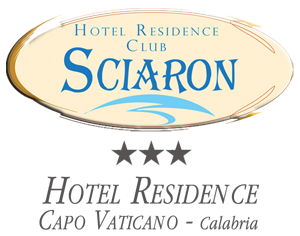
Tropea - Santa Maria dell'Isola
The tropeano territory is small extent, in fact, with 3.59 km² is at 7805º in Italy for the surface (while at 195º for population density). Its morphology is special, divides it into two parts: the upper part, where the majority of the population, and is where the daily life of the country, and a lower part (called "Marina"), which is located in near the sea and the port of Tropea. Among other outlying areas there are places "Carmine" and places "Campo" (divided in turn into "range over", which is mainly occupied by gardens and countryside, with some residential area, and "Under" Field, where they have based the local barracks of the Carabinieri, the Civil Hospital and Hospitality address for the SI Catering Tropea). The city, in the upper part, is built on a rock overlooking the sea at a height above sea level ranging from about 50 meters at the lowest point and 61 meters at the highest point. The historic town was once surrounded by walls and clubby on one side and there could only be accessed through the doors equipped with defense systems.
History and Monuments
Legend has it that the founder was Hercules when, returning from the Pillars of Hercules (Spain), he stood on the coasts of southern Italy. In the surroundings it was found graves of Greek origin Magna.
Tropea's story begins in Roman times, when along the coast Sixth Cesare Ottaviano defeated Pompey: a Roman south of Tropea had built a commercial port, near the present Santa Domenica, in Formicoli (a name derived from a corruption of the Forum of Hercules ), they are talking about Pliny and Strabo.
For its characteristic terrace seaside location, Tropea played an important role, both in Roman times (attested by the granite quarry, located about 2 km from the town, in the town of Tropea) is in the Byzantine era; many are the remains left by the Byzantines, like the church on the headland or the town walls (called just "walls of Belisario"). After a long siege, the city was seized from the Byzantines by the Normans, under whom prospered. Tropea continued to flourish even under the rule of the Aragonese. On February 4, 2016 was born the Club Unesco Tropea Coast of the Gods. [4]
Monuments and sights
Church on the promontory of Tropea (2009)
Note seaside resort, located on a high tuff promontory overlooking the Tyrrhenian Sea, on the west coast of Calabria, in the province of Vibo Valentia. Of particular interest is the historic center of the city, with many palaces and dell'XIX eighteenth century, perched on a cliff overlooking the beach sottostante.Interessanti are the "portals" of the buildings that were the noble families; some are equipped with large tanks dug into the rock, which were used to collect the grain from the Monte Poro, which then was loaded with clay carried in ships moored in the cliff of Tropea. Its hallmark is the shrine of Santa Maria Island, which stands on a promontory facing the town.
Of particular interest is the Cathedral of Our Lady of Romania, building of 1100, in Romanesque style, containing the sacred effigy of Our Lady of Romania, the city's patron. The city also houses the diocesan museum, the cathedral containing gold and silver, and several artifacts from various eras. Near the church, in the premises of the ancient Bishopric, a Diocesan Museum was established, with interesting paintings, sculptures and paintings, artifacts and furnishings. Recently, moreover, the archaeological section was opened.





